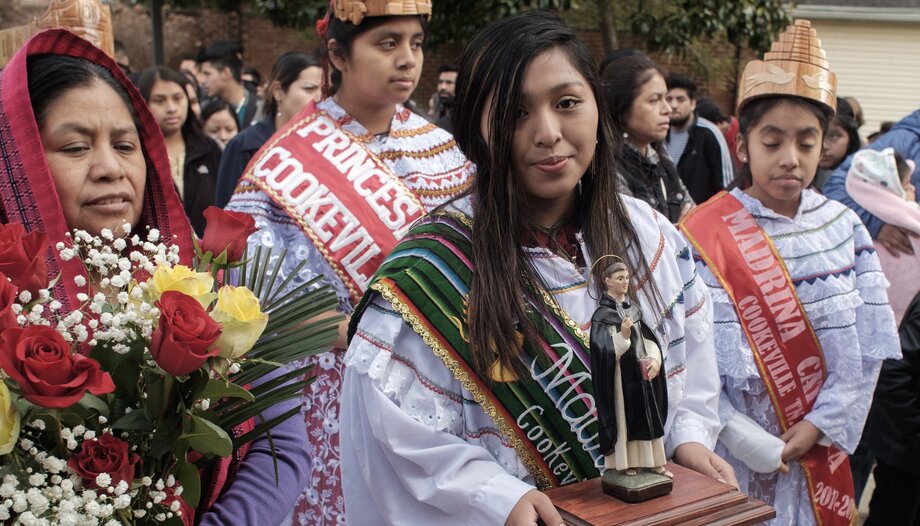Each year, the United States celebrates "Heritage Month" from September 15 to October 15. hispanic". It began in 1968 during the administration of President Lyndon Johnson and was later ratified by Ronald Reagan in 1988. The date was chosen because many Latin American countries, including Mexico, Chile, El Salvador, Guatemala, Honduras and Nicaragua, celebrate their independence on those days. It also coincides with October 12, considered "Columbus Day", which commemorates the arrival of the Genoese navigator to the Americas in 1492. In the United States there are more than 63 million people of Hispanic origin, mostly of Mexican, Puerto Rican, Cuban, and Central American origin.
The goal of Hispanic Heritage Month is to highlight the contributions of Hispanics in the United States. "Our culture has been enriched by the rhythms, art, literature and creativity of Hispanic peoples. Our values have been enhanced by the love of family and faith that are central to many Hispanic communities," said President Joe Biden in 2022 in the document declaring September 15 through October 15 as Hispanic Heritage Month.
On the occasion of this celebration, different government agencies at the federal, state and local levels organize activities related to the theme. For example, at the federal level, the National Park Service is carrying out the "My Park, My Story" initiative, which seeks to highlight the importance of parks in the daily lives of Hispanics. Likewise, the Library of Congress -the largest in the world with 175 million books- promotes in its reading room an investigation about the Andean community through a series of texts in Spanish and Quechua; the tour is entitled "Interconnecting Worlds: Weaving Community Narratives and Andean Stories". In addition, the National Archives - the building that houses the original text of the Declaration of Independence, the U.S. Constitution and other founding documents - presents a collection of photographs of prominent Hispanics such as César Chávez, civil rights leader and activist, and Ellen Ochoa, the first Hispanic woman to have traveled into space. It is worth noting that despite all their contributions to U.S. history, there is no museum dedicated to Hispanics in the country. Aware of this, the U.S. Congress approved in 2020 the establishment of the "Museum of the American Latino", whose planning and construction is being carried out in Washington DC, as part of the Smithsonian Museums network.
The Church and Hispanic Heritage Month
According to the Pew Research CenterOf the 63 million Hispanics, 43 % of them identify themselves as Catholic. More than 50% of the Latino population lives in California, Florida and Texas and represent the largest minority group in 26 U.S. states. Over the past four decades Hispanic ministry has flourished in thousands of parishes across the country, especially in the South and on the West Coast.
During Hispanic Heritage Month, the Church in the U.S. in its various dioceses organizes events, days of reflection, days of prayer and Masses for the occasion. For example, in the Archdiocese of Los Angeles, the "Mass in recognition of all immigrants" was celebrated on September 19, a ceremony presided by Archbishop Jose H. Gomez and attended by hundreds of parishioners from various Latin American nations. On the East Coast, in New York, a Mass to celebrate Hispanicity took place on October 1 at St. Patrick's Cathedral. Auxiliary Bishop Edmund Whalen presided. A week later, on October 8, the "Hispanic Parade" took place in the Big Apple, which went through different points of the mythical Fifth Avenue of NY. The event featured a parade of Hispanics dressed in typical costumes from 21 countries and dozens of floats.
The future of Hispanic ministry in the U.S.
In 2018, the V Encuentro Hispano was held at the national level, which resulted in a series of recommendations and priorities for the development of Hispanic pastoral ministry during the next decade. These priorities include leadership development and formation of Hispanic laity, especially young people; strengthening marriage and family life; evangelization and catechesis; vocational discernment for the priestly, religious and consecrated life. Taking into consideration these factors of the V Encuentro, the U.S. Conference of Catholic Bishops (USCCB) approved a "National Pastoral Plan for Hispanic Ministry" in June 2023.
The text takes as its foundation and point of reference a "synodal, evangelizing and missionary church at all levels". In the document, the U.S. bishops invite all of God's people to participate and join in the Plan: "Our generation has a unique opportunity during the next decade to prepare to celebrate the 500th anniversary of the apparitions of Guadalupe in 2031, as well as two thousand years of our redemption in 2033. Hispanics find God in the arms of Mary, the Mother of God, where they experience her goodness and compassion, particularly under the title of Our Lady of Guadalupe. We need this same missionary spirit to continue to create a culture of encounter to animate our pastoral ministry over the next ten years to help us walk together as missionaries and joyful disciples" (Pastoral Plan for Hispanic Ministry. USCCB, 2023).








